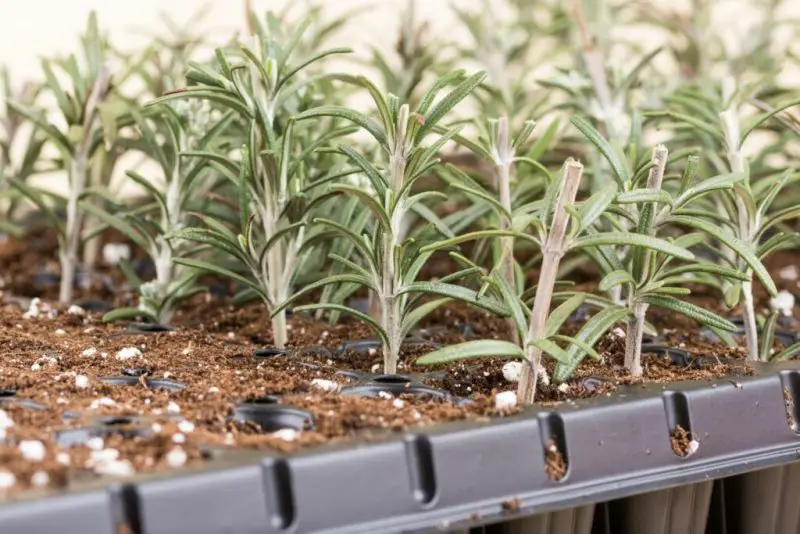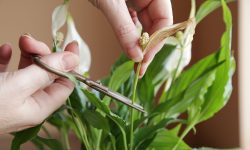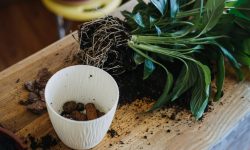Propagating rosemary from cuttings is one of the most rewarding ways to expand your herb garden. By creating new plants from healthy stems, you ensure a continuous supply of aromatic leaves for cooking, teas, and herbal remedies. This method allows gardeners to clone their favorite varieties, preserving flavor, fragrance, and growth habits. Unlike growing from seeds, cuttings provide faster results and higher success rates, making it an ideal choice for beginners and experienced gardeners alike.
Rosemary cuttings also offer an eco-friendly approach to gardening, reducing the need to buy new plants and promoting sustainable practices. With careful attention to timing, cutting selection, and proper rooting techniques, anyone can transform a small sprig into a thriving herb plant. Understanding the step-by-step process ensures healthy, vigorous growth, allowing your garden to flourish while filling your home with the fresh, invigorating scent of rosemary. Propagation becomes both a practical and enjoyable gardening experience.
Choosing the Right Rosemary Cuttings

Selecting healthy cuttings is the foundation for successful rosemary propagation. Choose stems that are young but firm, avoiding woody or overly soft branches. Ideal cuttings are about 4 to 6 inches long, with several sets of leaves. Inspect the plant carefully to ensure the cutting is free from disease, pests, or damage, as compromised stems are less likely to root successfully. A healthy cutting increases the chances of developing strong roots and a vigorous new plant. Additionally, selecting cuttings from the middle section of the plant often yields the best results, as these stems are mature enough to root but not too woody.
Timing also plays a crucial role in selecting rosemary cuttings. Spring and early summer are the best periods, as the plant is actively growing and producing new shoots. Cuttings taken during these months root faster and establish more quickly. Avoid taking cuttings from stressed or flowering plants, as these may allocate energy to flowers rather than root development. Observing the plant’s growth cycle ensures that cuttings have the vitality needed for rapid root formation. Seasonal considerations also reduce the risk of rot or failure, making early identification of ideal stems essential for consistent success.
Preparation is another key factor before planting the cuttings. Remove leaves from the lower two inches of the stem to reduce moisture loss and encourage root growth. Lightly trimming the tip of the cutting can stimulate branching and create a bushier plant later. Using clean, sharp scissors or pruning shears minimizes damage and prevents infections. Some gardeners dip the cut ends in rooting hormone to improve root development. By choosing strong, healthy cuttings and preparing them properly, gardeners create optimal conditions for propagating rosemary that will thrive in pots or garden beds, producing lush, aromatic foliage for months to come.
Preparing the Cuttings for Rooting
Proper preparation of rosemary cuttings is essential to encourage strong root growth and ensure healthy plants. Begin by trimming the stem to about 4 to 6 inches, removing any flowers or buds that may divert energy away from rooting. Strip the leaves from the lower two inches of the stem, exposing clean nodes where roots will emerge. This reduces moisture loss and prevents rot, creating ideal conditions for new root development. Handling the cuttings gently minimizes stress and increases the chances of successful propagation.
Applying a rooting hormone can further enhance root formation. Dip the prepared end of the cutting into a powder or gel containing natural auxins. This stimulates root cell development, helping cuttings establish faster. While not strictly necessary, using a rooting hormone can be particularly helpful for beginners or when propagating woody stems. After treatment, the cutting is ready to be inserted into a well-draining propagation medium, such as a mix of perlite, sand, and peat, which provides aeration and moisture balance without waterlogging the stem.
Maintaining proper environmental conditions is also critical during the rooting process. Keep cuttings in a warm, humid environment, out of direct sunlight. Covering the cuttings with a clear plastic dome or bag helps retain humidity and reduce stress. Mist the leaves lightly if necessary to prevent dehydration, but avoid oversaturating the medium. With careful preparation and attention to both cutting condition and environment, gardeners can reliably propagate rosemary cuttings, producing strong, aromatic plants ready to thrive in pots or garden beds.
Rooting Methods for Rosemary
Rosemary cuttings can be rooted using several effective methods, each offering reliable results depending on your resources and experience. One common approach is water rooting. Place the prepared cutting in a glass of clean, room-temperature water, ensuring that the stripped end is submerged while leaves remain above the surface. Change the water every few days to prevent stagnation and bacterial growth. Roots typically begin forming within two to four weeks. Once a healthy root system develops, the cutting can be transferred carefully into a well-draining potting medium.
Another popular method is rooting directly in soil or a propagation medium. Use a mix that promotes drainage and aeration, such as perlite combined with peat or coarse sand. Insert the cutting into the medium about one to two inches deep, ensuring good contact with the soil. Keep the medium consistently moist but not waterlogged, and maintain high humidity around the cutting with a plastic cover or dome. This approach often results in stronger root structures and faster acclimation to pots or garden beds.
Some gardeners combine techniques for optimal success. For instance, cuttings can begin in water to monitor root formation, then be transferred to soil once roots are visible. Regardless of the method, providing indirect light, stable temperature, and adequate humidity is essential. Avoid direct sunlight, which can stress the cutting and cause leaf burn. By carefully choosing and managing the rooting method, gardeners can propagate rosemary successfully, producing robust plants with abundant aromatic foliage for a thriving herb garden.
Caring for Newly Rooted Rosemary Cuttings
Providing Proper Light and Temperature
Newly rooted rosemary cuttings require a careful balance of light and temperature to thrive. Place them in bright, indirect sunlight for several hours daily, as direct sunlight can scorch tender leaves and stress the young roots. Maintaining a consistent temperature around 65–75°F (18–24°C) encourages steady growth. Sudden fluctuations or cold drafts can slow development and increase susceptibility to diseases, making young plants vulnerable.
Additionally, avoid overcrowding cuttings and ensure good airflow around each plant. Proper spacing reduces the risk of fungal infections and allows leaves to dry quickly after watering. Gradually acclimate plants to stronger light conditions over one to two weeks to prevent shock. Observing the cuttings daily helps identify stress signs early. By providing optimal light and stable temperatures, gardeners create a foundation for vigorous, healthy rosemary plants that will continue to grow robustly in pots or garden beds. Consistent monitoring ensures adaptation and encourages lush, aromatic foliage.
Watering and Soil Management
Watering newly rooted cuttings correctly is essential for long-term success. Keep the soil evenly moist but never waterlogged, as excess moisture can cause root rot. Use a well-draining medium that allows oxygen to reach the roots, supporting strong, healthy growth. Light misting of leaves can maintain humidity without oversaturating the soil, creating a favorable microenvironment for young cuttings. Additionally, ensure the container has drainage holes to prevent water accumulation at the base, which can quickly damage delicate roots. Using a spray bottle for top misting helps control moisture and prevents overwatering.
Monitor soil moisture daily and adjust based on ambient temperature, humidity, and the size of the cutting. Avoid letting the soil dry completely, which stresses roots and slows growth. Fertilize sparingly during the first few weeks using a diluted, balanced liquid fertilizer to encourage root establishment without burning tender roots. Proper watering and soil management help newly rooted rosemary cuttings develop into resilient, aromatic plants. Consistent care during these early stages increases survival rates, strengthens root systems, and prepares cuttings for successful transplanting into pots or garden beds for continuous harvest.
Transplanting Rooted Rosemary Cuttings into Pots or Garden Beds
Choosing the Right Container or Location
Selecting an appropriate container or garden spot is crucial for transplanted rosemary cuttings. For pots, choose one with adequate drainage holes to prevent waterlogging. The container should be large enough to accommodate root growth for several months, ideally at least 6–8 inches deep. When planting in garden beds, choose a sunny location with well-draining soil. Rosemary thrives in areas that receive at least six hours of direct sunlight daily. Avoid low-lying spots where water can accumulate, as this can lead to root rot and fungal issues.
Soil preparation enhances transplant success. Loosen the soil and amend it with sand or perlite to improve drainage. If planting in pots, use a light, airy potting mix that allows roots to breathe. Proper placement ensures that the plant receives sufficient light, airflow, and nutrients to establish quickly. Gradually introducing newly rooted cuttings to outdoor conditions, if starting indoors, prevents shock. This careful selection of container or garden location supports vigorous growth and long-term plant health, setting the stage for a lush, productive rosemary plant.
Planting and Initial Care
When planting, create a hole slightly larger than the root ball of the cutting. Gently position the cutting so that roots are spread evenly without bending or crowding. Fill the hole with prepared soil or potting mix, firming lightly around the base to eliminate air pockets while avoiding compacting the soil. Water thoroughly after planting to help roots settle and reduce transplant stress. Using a light, balanced liquid fertilizer a week after transplanting can encourage initial growth. Avoid fertilizing immediately, as young roots are sensitive and excessive nutrients may burn them. Providing some shade for the first few days also helps cuttings acclimate without wilting.
After transplanting, provide consistent care during the first few weeks. Keep the soil evenly moist but not soggy and protect young plants from extreme sunlight or strong winds. Mulching around garden cuttings can help retain moisture, suppress weeds, and regulate soil temperature. Monitor plants daily for signs of stress, such as wilting or yellowing leaves, and adjust care as needed. Regular observation ensures early intervention if issues arise. Proper planting and attentive early care ensure that rooted rosemary cuttings establish quickly, grow vigorously, and provide a continuous supply of aromatic leaves for culinary and decorative use, setting the foundation for a thriving herb garden.
Tips for Maintaining Healthy Rosemary Plants After Propagation
Proper Watering and Soil Care
Maintaining healthy rosemary plants begins with careful watering and soil management. Rosemary prefers well-draining soil, and excessive moisture can lead to root rot or fungal diseases. Water the plants deeply but infrequently, allowing the top inch of soil to dry between waterings. Using a well-aerated potting mix in containers or amending garden soil with sand or perlite ensures adequate drainage. Lightly mulching around garden plants helps retain moisture while preventing soil compaction and weed growth.
Regularly monitor soil moisture, particularly during hot, dry periods. Avoid letting the soil become waterlogged, as this stresses roots and slows growth. Fertilize sparingly, using a balanced, diluted liquid fertilizer every four to six weeks during the growing season. Over-fertilizing can lead to weak stems and reduced aroma. By providing consistent, careful watering and maintaining optimal soil conditions, gardeners encourage strong root systems and lush, aromatic foliage that thrives throughout the season.
Pruning and Pest Management
Pruning rosemary promotes bushy growth and prevents plants from becoming woody and leggy. Trim back new growth regularly, but avoid cutting more than one-third of the plant at a time. Focus on younger stems for culinary use while leaving older branches to continue supporting the plant’s energy reserves. Pruning also improves air circulation within the plant, reducing the risk of fungal infections.
Pest management is equally important. Inspect plants regularly for common pests such as aphids, spider mites, and whiteflies. Use natural remedies like insecticidal soap or neem oil when necessary, avoiding harsh chemicals that can damage tender cuttings. Maintaining overall plant health through proper watering, soil care, and pruning makes rosemary more resilient to pest infestations. Consistent attention ensures propagated plants grow vigorously, produce abundant aromatic leaves, and provide long-term success in both garden beds and containers.
Harvesting Leaves from Propagated Rosemary
Harvesting leaves from propagated rosemary at the right time ensures maximum flavor, aroma, and plant health. Wait until the plant is well-established with several inches of new growth before harvesting. Young, tender stems are ideal for culinary use, as they contain the highest concentration of essential oils. Avoid cutting more than one-third of the plant at a time to prevent stress and encourage continued growth. Regular, careful harvesting encourages bushier foliage and prevents the plant from becoming leggy or woody. By maintaining a consistent harvest schedule, gardeners help the plant allocate energy effectively, promoting long-term vigor and productivity.
The best time of day for harvesting is early morning, after the dew has dried but before the sun becomes intense. Essential oils are most concentrated during this period, giving the leaves a robust aroma and flavor. Harvesting during midday or in extreme heat can reduce potency and may stress the plant. Use clean, sharp scissors or garden shears to make precise cuts, minimizing damage to stems. Removing only what you need also helps maintain the overall structure and vigor of the plant. Observing the plant regularly allows for timely harvesting and ensures optimal leaf quality throughout the season.
After harvesting, leaves can be used fresh in cooking, teas, or garnishes, or they can be dried for long-term storage. For fresh use, rinse gently and pat dry to avoid bruising. Leaves harvested properly retain essential oils and vibrant green color longer. Dried leaves maintain flavor and aroma for months when stored in airtight containers away from heat and sunlight. By following careful harvesting practices, gardeners can enjoy a continuous supply of aromatic rosemary while maintaining healthy, thriving plants that will provide flavorful leaves for years to come.
Storing and Preserving Leaves from Propagated Rosemary
Proper storage and preservation of rosemary leaves ensure that their flavor and aroma remain vibrant for long-term use. Freshly harvested leaves can be stored in the refrigerator for up to two weeks. Wrap the stems loosely in a slightly damp paper towel and place them inside a perforated plastic bag or airtight container. This method helps maintain humidity around the leaves without causing excess moisture that can lead to mold. Checking the leaves periodically and removing any that show signs of decay keeps the rest of the batch fresh.
For longer storage, drying is a reliable method. Bundle small sprigs together and hang them upside down in a cool, dry, and well-ventilated area, away from direct sunlight. Alternatively, use an oven or food dehydrator at low temperatures to preserve essential oils while speeding up the drying process. Once the leaves are crisp and brittle, strip them from the stems and store them in airtight containers. Dried rosemary maintains its potency for several months, making it convenient for cooking, teas, and infusions throughout the year.
Freezing is another effective preservation option. Spread rosemary sprigs on a baking sheet and freeze them individually before transferring them to airtight containers or freezer bags. This prevents the leaves from clumping together and preserves both flavor and aroma. Using ice cube trays with water or olive oil to freeze rosemary also works well for ready-to-use portions in recipes. By applying these storage and preservation techniques, gardeners can enjoy the full benefits of propagated rosemary leaves year-round while minimizing waste and maximizing culinary value.
Troubleshooting Common Issues with Propagated Rosemary
Yellowing or Wilting Leaves
Yellowing or wilting leaves in propagated rosemary often indicate overwatering, nutrient deficiencies, or insufficient light. Overwatering is the most common culprit, causing root rot and reducing the plant’s ability to absorb nutrients. Ensure soil is well-draining, allow the top layer to dry between watering, and monitor moisture levels carefully. Nutrient deficiency can be addressed with a balanced, diluted fertilizer applied sparingly.
Insufficient light can also weaken rosemary, causing pale, drooping leaves. Position plants in bright, indirect sunlight, gradually acclimating them to stronger light if moving outdoors. Regularly inspect leaves and stems to catch early signs of stress, removing any damaged foliage to promote healthy growth. Maintaining proper watering, nutrition, and light conditions ensures the plant recovers quickly and continues producing aromatic, vibrant leaves.
Pest Infestations
Pests such as aphids, spider mites, and whiteflies can affect propagated rosemary, especially young, tender cuttings. These insects feed on sap, causing leaf curling, discoloration, and stunted growth. Early detection is crucial to prevent widespread damage. Regularly inspect plants, particularly the undersides of leaves, for signs of pests, eggs, or webbing. Stress from improper watering, overcrowding, or poor air circulation can make plants more susceptible to infestations. Maintaining optimal growing conditions strengthens the plant’s natural defenses and reduces vulnerability.
Natural pest control methods are effective and safe for young plants. Spraying with insecticidal soap or neem oil helps eliminate pests without harming rosemary. Additionally, introducing beneficial insects such as ladybugs, lacewings, or predatory mites can control aphid and mite populations naturally. Regular pruning and thinning improve airflow, further discouraging pests. Maintaining overall plant health through consistent watering, proper nutrition, and adequate spacing reduces pest pressure. Vigilant observation and timely intervention ensure propagated rosemary remains vigorous, healthy, and productive, providing a continuous supply of aromatic leaves for culinary, decorative, and herbal uses.
Root or Stem Problems
Root or stem issues in propagated rosemary can result from poor drainage, overwatering, or physical damage during transplanting. Soft, mushy roots often indicate rot, while brittle or discolored stems may signal dehydration or fungal infection. Using well-draining soil and providing consistent, moderate watering prevents most root and stem problems. Additionally, avoiding compacted soil around the base ensures roots receive adequate oxygen, which supports healthy growth and strong, aromatic foliage.
Handling cuttings gently during transplanting is critical to prevent damage. Inspect the base of each plant regularly for signs of rot, discoloration, or unusual soft spots. Improving airflow around plants and ensuring they receive sufficient sunlight reduces fungal growth risk. If affected cuttings are identified, remove them immediately to prevent spreading disease to healthy plants. Maintaining optimal conditions and addressing problems early helps propagated rosemary develop robust stems and roots, ensuring long-term plant vigor, resilience, and a continuous supply of flavorful leaves for culinary and ornamental use.
Sustainability and Year-Round Care for Propagated Rosemary
Ensuring sustainability in growing propagated rosemary involves maintaining consistent care practices throughout the year. Healthy, well-established plants require regular monitoring of water, light, and soil conditions. Proper irrigation prevents both drought stress and root rot, while exposure to at least six hours of sunlight daily supports vigorous growth. Using organic fertilizers or compost helps maintain soil health and reduces chemical dependency, promoting long-term sustainability and environmental responsibility in herb cultivation.
Pruning and harvesting strategically also contribute to sustainable growth. Regular, light harvesting encourages bushy development and prolongs the plant’s productive lifespan. Avoid removing more than one-third of the plant at a time to prevent stress and ensure continuous regeneration. Pruning older stems while focusing on tender new growth maintains structural integrity and encourages stronger, aromatic foliage. Thoughtful harvesting and pruning practices support both immediate culinary use and long-term garden productivity.
Year-round care also includes winter protection and monitoring for seasonal pests or diseases. In colder climates, rosemary can be grown in containers and moved indoors during frost periods. Applying mulch helps regulate soil temperature and conserve moisture. Regular inspection for signs of stress, nutrient deficiency, or infestations ensures early intervention. By combining sustainable soil management, careful harvesting, and seasonal protection, gardeners can enjoy a thriving, resilient rosemary garden that provides aromatic leaves and culinary value throughout the year.
FAQ About How to Propagate Rosemary from Cuttings
How long does it take for rosemary cuttings to root?
Rosemary cuttings typically root within three to six weeks, depending on temperature, humidity, and care. Using a well-draining medium, maintaining consistent moisture, and placing cuttings in bright indirect light accelerates root development. Patience and proper conditions are essential for strong, healthy roots suitable for transplanting.
How often should I water newly propagated rosemary?
Newly propagated rosemary requires consistent but moderate watering. Keep the soil evenly moist, not soggy, to prevent root rot. Allow the top inch of soil to dry slightly between waterings. Daily monitoring during hot or dry periods helps maintain optimal moisture levels and supports strong root and foliage development.
Can rosemary be propagated indoors successfully?
Yes, rosemary can be propagated indoors using cuttings in pots or trays. Provide bright indirect sunlight, consistent humidity, and well-draining soil. Indoor propagation allows protection from frost or pests, ensuring young plants develop strong roots and healthy foliage before transplanting outdoors or maintaining container growth year-round.
When is the best time to take rosemary cuttings?
The best time for taking rosemary cuttings is during spring or early summer when the plant exhibits vigorous growth. Select young, tender stems that are disease-free. Avoid woody or overly mature stems, as they root more slowly and are less likely to establish successfully, ensuring a higher success rate for propagation.
How can I prevent pests on propagated rosemary?
To prevent pests, maintain proper spacing, adequate airflow, and regular inspection. Use natural remedies like neem oil or insecticidal soap for minor infestations. Introducing beneficial insects, such as ladybugs, can control aphids. Healthy, well-cared-for plants are naturally more resistant to common pests and maintain strong, aromatic growth.
Conclusion
Propagating rosemary from cuttings is a rewarding way to enjoy a continuous supply of aromatic, flavorful herbs. By following proper techniques for rooting, planting, watering, and harvesting, gardeners can ensure healthy, vigorous plants. Paying attention to pest management, seasonal care, and storage methods enhances longevity and culinary value. Sustainable practices, including careful pruning and mindful harvesting, maintain plant health year-round. With patience, consistency, and attentive care, propagated rosemary thrives, offering vibrant greenery, rich aroma, and a reliable source of fresh leaves for cooking, teas, and decorative uses throughout every season.






